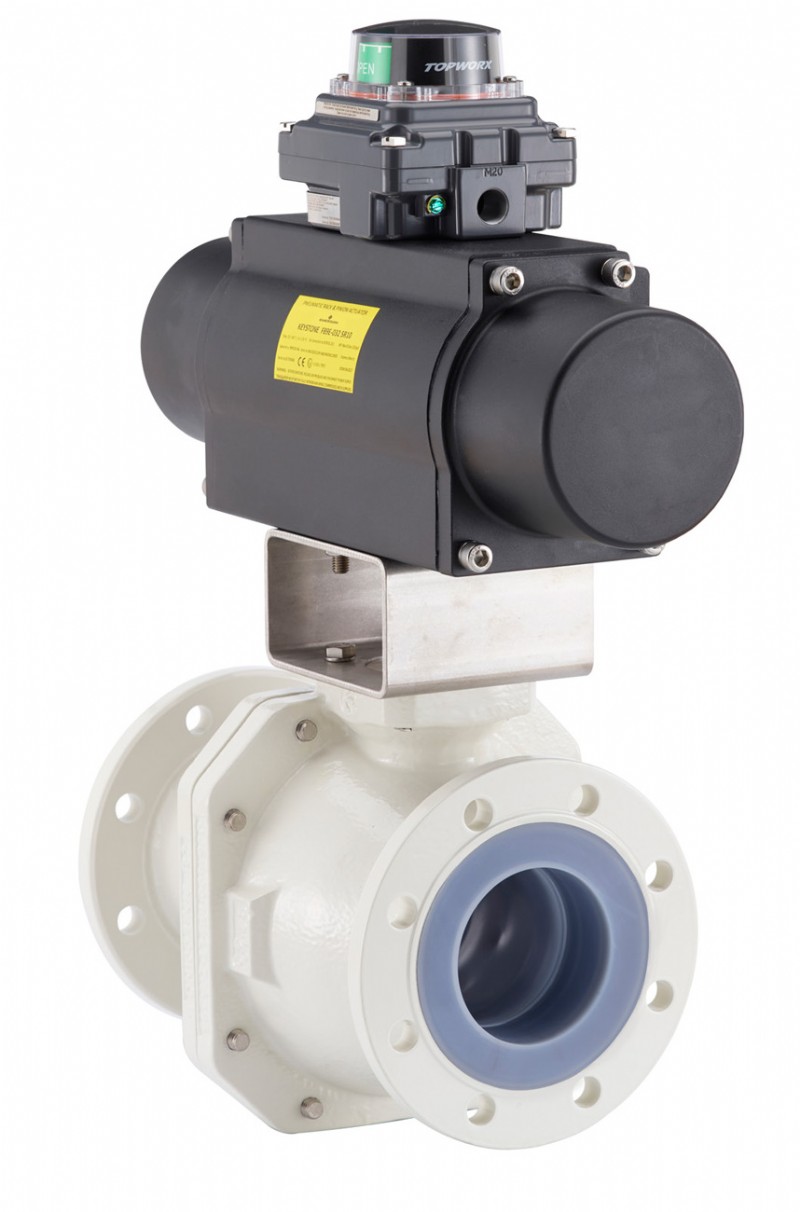Solving the Threefold Challenge of Fugitive Emissions in Chemical Processing with Valves

Emerson’s Neotecha NXR lined ball valve is fugitive-emissions certified and designed to endure corrosive and toxic media
A 2015 study conducted by the Rhodium Group estimated that 3.6 trillion cubic feet of natural gas is released annually to the atmosphere, translating to about $30 billion in lost revenues.
Today’s chemical plant operators face a threefold challenge: reduce lost revenue due to fugitive emissions, remain compliant with local emissions standards, and uncover emissions-compliant technologies that are appropriate for their application needs. Working with a main valve partner such as Emerson can help operators face these challenges, while also reducing operational costs on maintenance and minimizing the risk of financial penalties from noncompliance.
Emissions standards around the world are primarily focused on valves and their stems. The Environmental Protection Agency (EPA) determined that valves were responsible for 63 percent of emissions, prompting operators to pay close attention to their valve purchasing decisions.
Operations that are processing severe corrosive and toxic media should pay special attention to their valve selection process, as significant temperature fluctuations make valve assets more susceptible to failure and leakage. In these cases, ill-suited valves can lead to complete valve failure, increased maintenance costs, and unnecessary plant downtime.
Valve design can make a significant difference in minimizing emissions. The potential for fugitive emissions greatly decreases with rotary quarter turn designs, such as ball valves, where sealing is only subjected to a 90-degree rotation cycle. Other designs place greater reliance on packing sets enduring a linear pull-through motion.
Selecting valve products that have been pre-certified to meet standards such as the European Union’s TA-Luft/VDI 2440 can also help operators in extreme environments address emissions challenges.
Valves that are equipped with a perfluoroalkoxy (PFA) lining are designed to withstand corrosive and toxic media so that end users get the longest lifecycle possible from their valve investment with minimal maintenance. Emerson’s new Neotecha™ NXR, a PFA-lined ball valve, for example, is manufactured for high reliability, and addresses fugitive emission leakage and valve failure issues in harsh applications.
The valve’s offset split body design is also better suited to handle the stresses of significant temperature fluctuations associated with chemical processing. Its maintenance-free design increases plant uptime and lowers total cost of ownership to facilitate operational certainty.
No matter the application, chemical processing end users facing these and other fugitive emissions challenges should navigate fugitive emissions standards and solution options with a trusted main valve partner at their side for optimal results. Not only will their operations adhere to regulation even as they evolve over time, they also stand a stronger chance of reaching top quartile performance.
For more information about Emerson’s Neotecha lined ball valves, visit: https://www.emerson.com/en-us/automation/valves-actuators-regulators/neotecha.
Tel: 01858 467 281
Email: uksales@emerson.com
Web: www.emerson.com/automation-solutions

| Telephone: | 0870 240 1978 |
| Email: | uksales@emerson.com |
| Website: | https://www.emerson.com/en-gb/automation/home |
| More information on the Emerson Process Management Ltd BVAA Member Directory Page |
Search related valve / actuator articles: Emerson Process Management LtdIssue 45Ball ValvesFugitive Emissions







-web.jpg)





